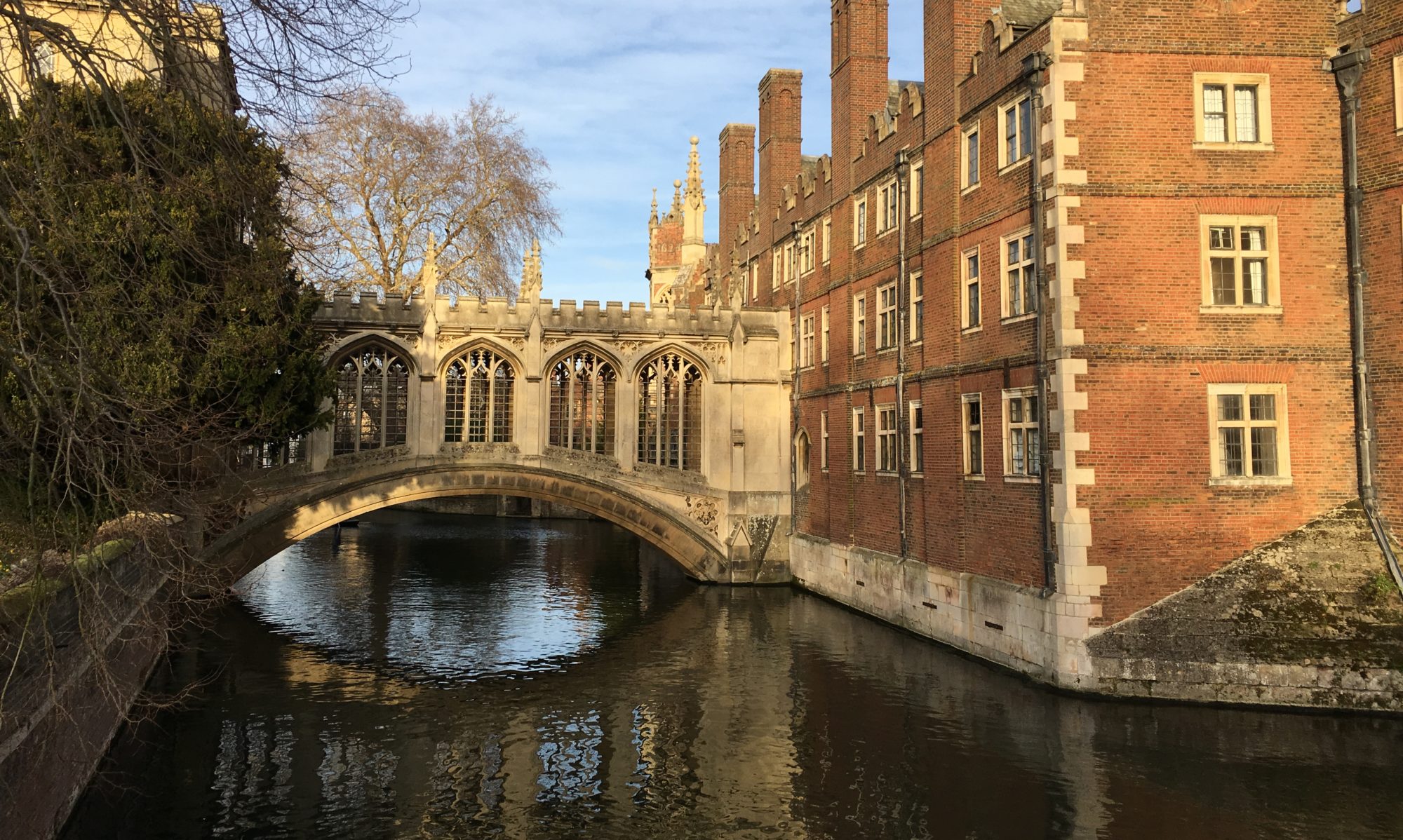A few days ago in a window of benevolent weather, my flatmate and I went to see the sunrise over Cambridge from the highest ground in the city: Castle Mound. Not being habitual early risers, we underestimated how early the colors actually begin to paint the sky before the sun is scheduled to show itself. At 7:30 a.m. at the end of January in Cambridge, 20 minutes before sunrise, the day has already eased itself in, and the pink has fanned out through the clouds. We cycled hastily under the luminous sky, sneaking glances at the risk of swerving. At this time of day during a pandemic, there were only a few other cyclists and small accumulations of cars at stoplights. We could ease through the awkward roundabout at Madingley Road and Northampton Street with no problem, chug up Castle Street, lock our bikes and cross traffic-free to the small green hill tucked behind city buildings. I left my winded flatmate behind to hurry up the curving steps and catch the sun.
Grantchester Meadows
When the English poet and Cambridge alumnus Rupert Brooke was homesick and depressed in Germany in 1912, he wrote a nostalgic, light-hearted poem about one of Cambridge’s gems:
. . . would I were
In Grantchester, in Grantchester! —
Some, it may be, can get in touch
With Nature there, or Earth, or such.
…I only know that you may lie
Day long and watch the Cambridge sky,
And, flower-lulled in sleepy grass,
Hear the cool lapse of hours pass,
Until the centuries blend and blur
In Grantchester, in Grantchester. . . .
God! I will pack, and take a train,
And get me to England once again!
For England’s the one land, I know,
Where men with Splendid Hearts may go;
And Cambridgeshire, of all England,
The shire for Men who Understand;
And of THAT district I prefer
The lovely hamlet Grantchester.
(from “The Old Vicarage, Grantchester”)
Brooke proceeds to comically badmouth every other village in the vicinity of Cambridge based entirely on what insults rhyme with their names.[1] It makes an interesting timepiece, to recognize the names of villages that have now been subsumed as neighborhoods of the City of Cambridge (Madingley, Cherry Hinton, Ditton…). Grantchester, however, is one village that has kept its geographical identity, still tiny and discrete on the banks of the River Cam amidst fields and college sports greens. Nevertheless, it is very closely linked with Cambridge, not least by the steady flow of joggers and dog-walkers along the two-mile footpath that runs beside the River Cam from Cambridge to Grantchester. Much more could be said about Grantchester, the village— its medieval church, its pubs, its tearoom, its namesake detective show I got my family hooked on after witnessing its fourth season being filmed in town—but it’s the path to Grantchester I want to write about for now. The path ambles through the idyllic chain of green where Brooke wanted to lie “flower-lulled in sleepy grass”: Grantchester Meadows.

Hobson’s Conduit and Nine Wells
Waterways have an inherent sense of story—they bring elsewhere to you, following a path with a volition beyond your own, and tacitly invite you to find out where from and where to. Here’s one: Hobson’s Conduit, a stream dug in 1610 from chalk springs out in the fields to the heart of Cambridge, still flowing and steeped in city lore. When a retired Cambridge professor told me about the walk along the Conduit’s length from city center to source at Nine Wells Nature Reserve, I tucked the captivating idea away in my to-walk list. Although I inadvertently walked partway on the inviting public footpath once, it took me a while to pick up the trail again.
Boxing Day 2020: gray and brisk but not raining or freezing; paths still muddy and fields flooded after the storm two days before Christmas. Looking for a way to pass an afternoon with a friend on the first day of renewed Covid lockdown, I suggested the walk to Nine Wells.


